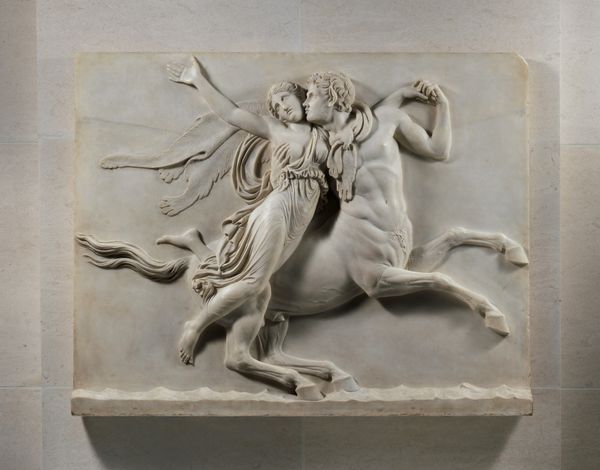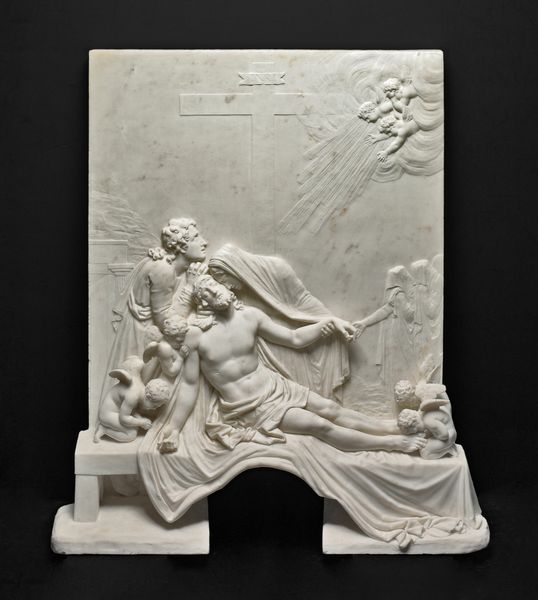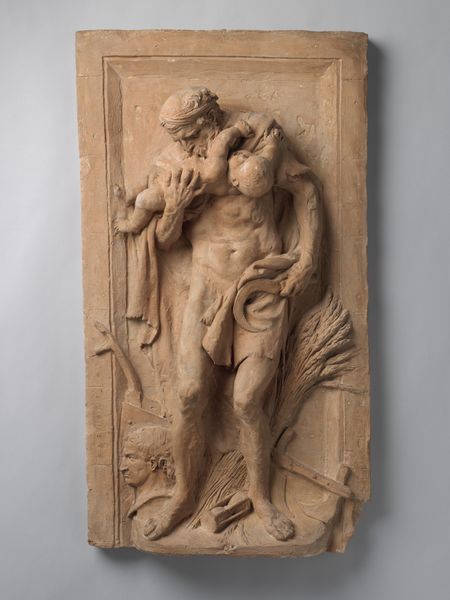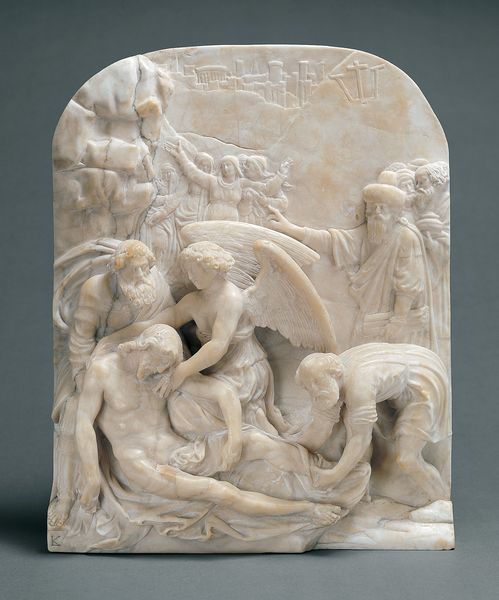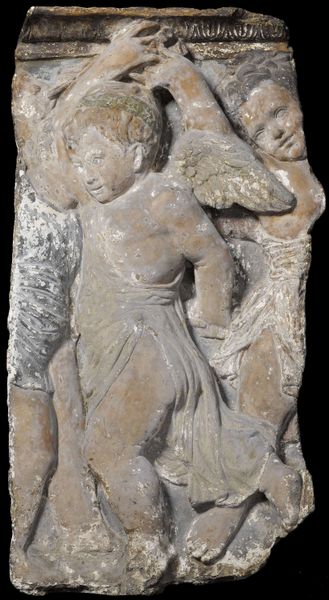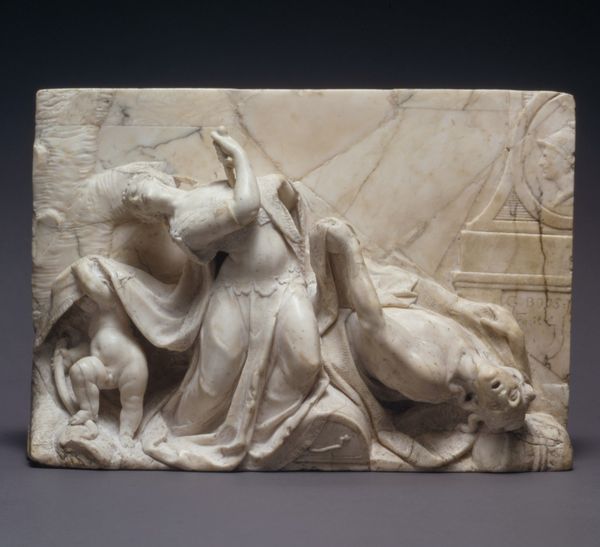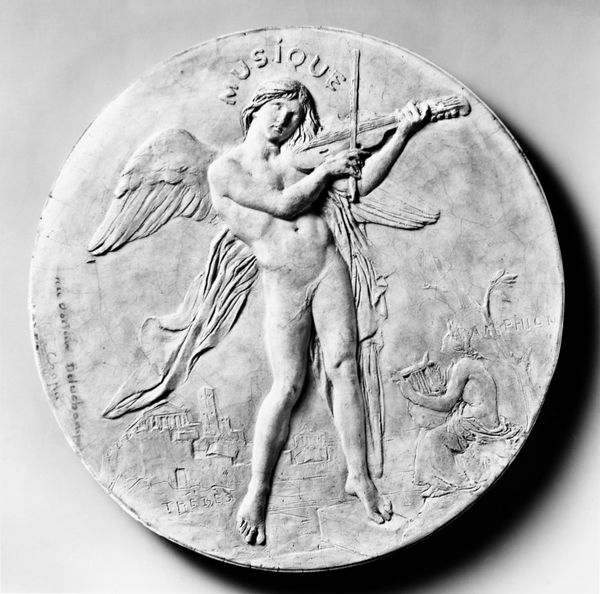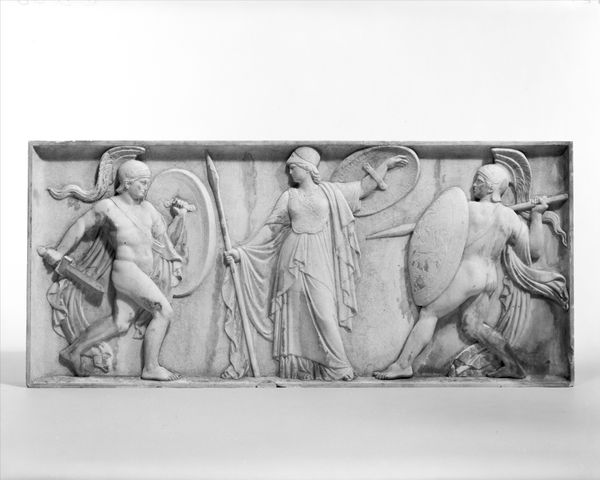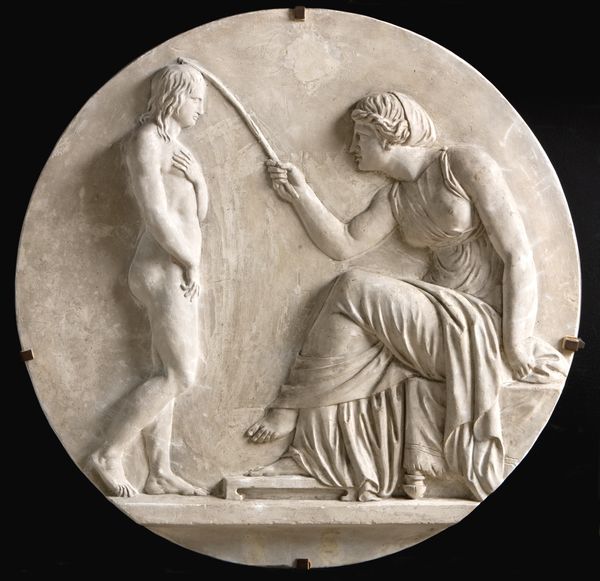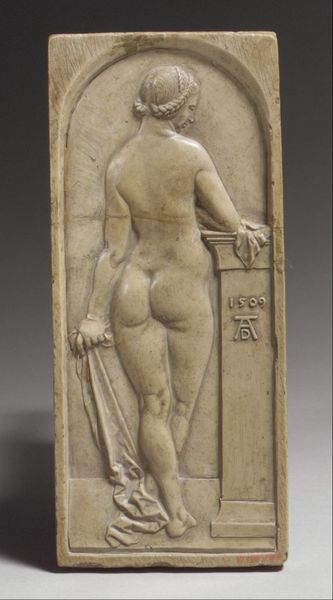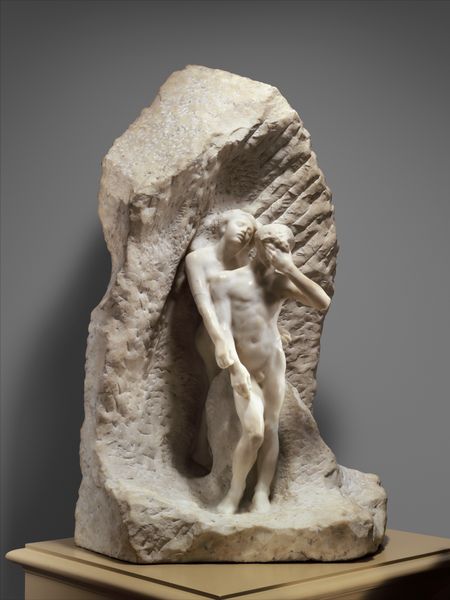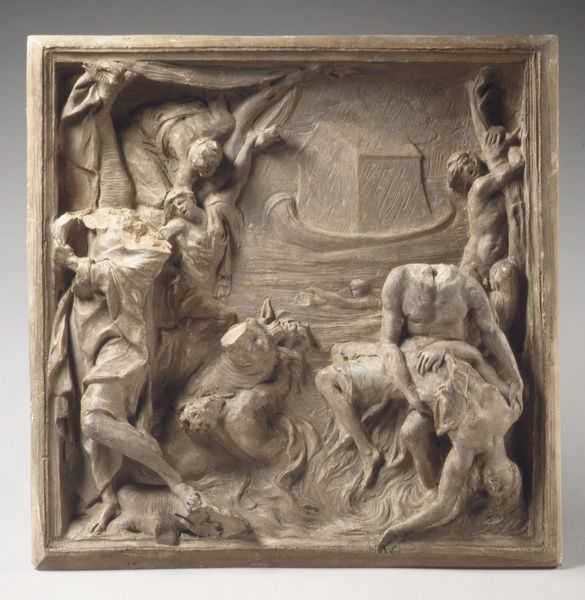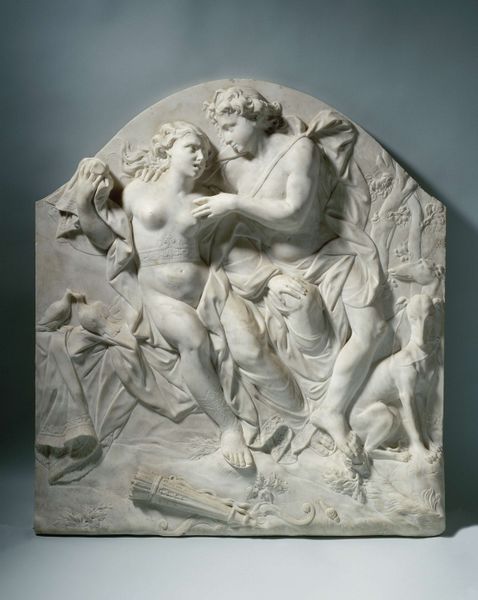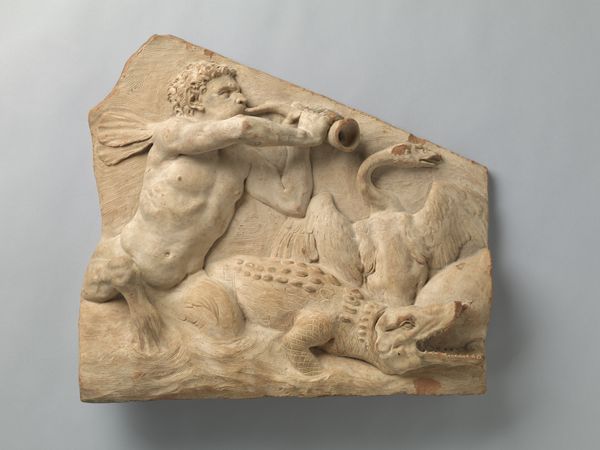
relief, sculpture, marble
#
baroque
#
stone
#
sculpture
#
relief
#
landscape
#
sculptural image
#
figuration
#
sculpture
#
marble
Dimensions: height 80 cm, width 86 cm, thickness 13 cm, weight 126.2 kg
Copyright: Rijks Museum: Open Domain
This stone tablet depicting Fortuna was crafted by Hendrick de Keyser in Amsterdam, likely in the early 17th century. It's a fragment from a facade, representing the Roman goddess of fortune, her billowing hair symbolizing the capricious winds, and a ship suggesting mercantile activity. In the Dutch Golden Age, Amsterdam was a hub of global trade, heavily reliant on maritime success, but the seas are unpredictable. Keyser’s Fortuna embodies this tension. Architectural sculpture like this served a public role, constantly reminding those passing by of their dependence on chance and providence, or perhaps inviting them to take risks to ensure the goddess remained on their side. To understand this work, we look at the economic history of the Netherlands, its religious context, and the iconography of the period. Fortuna encapsulates the spirit of a city and society grappling with the promises and perils of its own success.
Comments
No comments
Be the first to comment and join the conversation on the ultimate creative platform.
